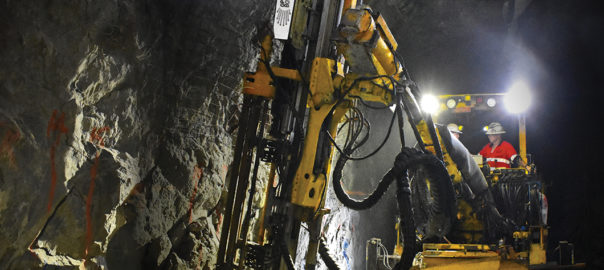CSIRO scientists are using microbes and other methods to remove valuable metals and other contaminants from mine wastewater – making remediation pay, the research company says.
And, after testing it out in the lab, CSIRO is now working with Evolution Mining to develop better treatment solutions for the wastewater at the company’s Mt Rawdon gold mining operation in Queensland.
These technologies can process water so it’s pure enough to be safely returned to the environment. It can also be recycled and reused in mine production, according to CSIRO.
CSIRO’s Anna Kaksonen, who leads the research group working in biotechnology for water quality, said: “Certain microbes can help to either oxidise or reduce metals or other compounds, like sulphate, nitrate or selenate, so we can remove them from water.
“Microbes can also be used to clean up organic impurities and reduce acidity or alkalinity.
“For example, wastewater from the alumina industry has a lot of organic impurities that can accumulate in the water used in ore processing.”
Biological treatment can be combined with other processes like hydrotalcite precipitation, delivering a more effective clean-up than either process can alone, according to CSIRO.
The hydrotalcite (an anionic clay) precipitation process invented by CSIRO’s Grant Douglas, and licensed to Virtual Curtain Ltd, involves adding patented mixture into the wastewater, which then binds to metals and other contaminants as it forms hydrotalcite.
“Contaminants are easily removed from the wastewater as a well-settling sludge containing valuable metals in highly concentrated compounds. Adding biological processes after the hydrotalcite precipitation can remove other contaminants remaining in the water, such as sulphate and nitrate,” the organisation said.
Kaksonen says the biological technology often uses bacteria and archaea, which is another type of prokaryotic microbe. Some treatment processes use plant materials or even wetland plants to provide a continuous carbon and energy source for the microbes. These biotechnologies mimic natural systems, but are designed to provide optimum conditions to clean up wastewater.
CSIRO Senior Research Scientist, Dr Ka Yu Cheng, said: “Most of our work has two dimensions.
“First, we aim to understand how the biology works in the environment now.
“Second, we try to engineer the process so that microbes can work better to achieve what we want them to do – such as finding the right mix of plants, the right temperature or the right pH to increase the activity of the microbial community.”
The CSIRO team uses DNA analysis to identify the type of microbes that exist in mine water. They then search through large databases to identify more information about these tiny helpers.
The team also do their own “bio prospecting” – exploring various places in both natural environments and in contaminated sites, to find microbes that thrive in harsh environments, according to CSIRO.
“We take samples from mine sites, existing wastewater treatment processes or sediments,” Dr Kaksonen said.
Team members also look for suitable organic solid or liquid waste streams, such as the glycerol waste from biodiesel production that could be used to drive biotechnical mine water treatment.
“There could be some synergies for using waste from one industrial sector as a feedstock for another sector,” Dr Kaksonen said.
“For example, industrial symbiosis could happen between biodiesel and mining industries, moving both industries toward a more circular economy.”
The CSIRO team recently tested their biotechnology processes in the laboratory on mine water. They are now working with Evolution to develop better treatment solutions for the wastewater at Mt Rawdon.
Dr Cheng said: “The company is planning to use a wetland system to treat mine wastewater. CSIRO’s team will compare the effectiveness of sawdust, plant material, ethanol and lactate to find the best material that can support the microbial treatment in a wetland-like system.”
Dr Kaksonen added: “The mine wastewater from Evolution’s mine will contain sulphate and metals, so we are working with the company to combine hydrotalcite precipitation and biological sulphate reduction.”
The Mt Rawdon gold deposit is a massive, volcaniclastic hosted, low-grade gold deposit that exhibits excellent characteristics conducive to low cost mining and treatment, according to Evolution Mining. The operation is one of its most reliable mines, having produced more than 1.5 Moz of gold since first production in 2001.
Dr Kaksonen said: “While some mining companies have used wetland systems and have trialled various biotechnical processes, most mine sites still use chemical treatments to clean up mine water.”
A constructed wetland could potentially be a cost-effective process to treat water to a stage where it is safe to release back into the environment. The wetland could be constructed while the mine is operating and form a part of the mine closure plan, CSIRO said.
“Biotechnical processes have many advantages when compared to traditional chemical treatments,” Dr Kaksonen said.
One example is that sulphate-reduction based bioprocesses can form metal sulphides – instead of the hydroxides that form in traditional treatments – making it much easier to remove cleaner water from the mix.
“Because metals can be more easily recovered from sulphides, and bioprocesses can use organic waste streams, these techniques also reduce operating costs,” Dr Kaksonen said.
CSIRO said: “The processes that the CSIRO team is developing could herald a revolution in mining remediation – making effective mine wastewater treatment an economic imperative, as well as an environmental one.”







